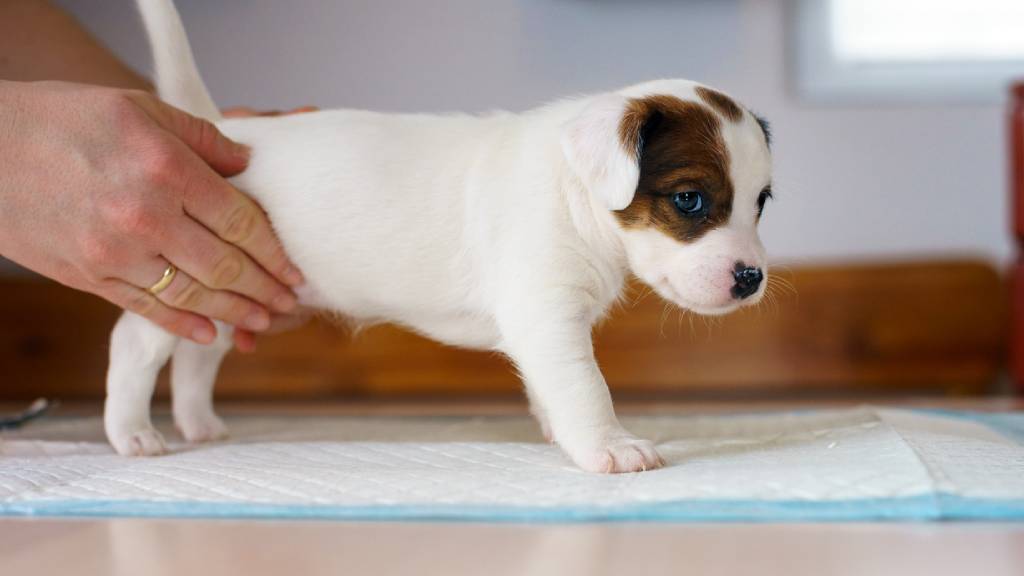How to puppy proof your house

So you’ve welcomed a new four-legged friend into your home. It’s an awesome time when a puppy enters your life. However, it can also be equally challenging and worrisome. Puppy-proofing your home is a vital part of starting your life together with your new puppy.
Take every chance you can to combine training with puppy-proofing. It lays a great foundation for the future of your relationship, and keeps everyone safe and happy. Of course there’ll be mishaps, but starting good habits from the beginning can be a big help for the future.
Let your puppy explore their new surroundings slowly, and set your puppy up to succeed, not fail. Have a safe, approved place for sleeping and toileting. Learn about toilet training techniques. Rule number one – punishing your puppy when you get home long after the deed was done is pointless – your puppy won’t understand or remember.
Be vigilant and cut off those accidents – as much as possible – before they happen.
Teach etiquette from the beginning – no jumping on benches, no chewing what you don’t want chewed, the right place to lie down undisturbed, and plenty of “approved” toys and distractions.
Before your puppy arrives
- Decide where your puppy is going to live – giving them free rein from the outset can be as overwhelming as it is hazardous. Initially it might be a few rooms, with access to a yard or balcony. Wherever that is, secure it. That means fences, balconies, decks and doors. And remember, a puppy can squeeze through the tiniest of openings.
- Get down to puppy level to secure the area. That means you, on all fours, checking for anything that might tempt a puppy and putting it out of reach. Put poisonous items up high and secure them. And remember it’s not enough to just clear the floor – puppies love to explore, so coffee tables and plants that are in reach should be cleared too.
- Tempting items you might not think of include everything from hair bands, keys, remote controls, to mobile phones, buttons, plastic bags, sewing needles and earrings.
- Electrical cords and blind cords pose a very real hazard – both of electrocution and hanging. Conceal them, cover them in specially-purchased PVC pipe or tie them up out of the way.
- A rookie tip to keep a puppy away from where they shouldn’t be is the “pepper fort” – cracked pepper in a solid line around the area to stay away from will give them a sniff to remember and stop them in their tracks. There are also plenty of good dog deterrent sprays to discourage chewing. Keep your dog clear of areas they shouldn’t touch and stop them returning to the scene of the crime if there’s a toileting accident.
- If you catch your puppy chewing something they shouldn’t, a firm “no”, drop, and substituting with an acceptable chew toy of their own is effective.
In the kitchen
The kitchen is an enticing mix of smells, tastes and chewable stuff for a pup. Secure all drawers (think child-proof latches) and get potentially poisonous cleaning items out of reach.
If they can get into a cabinet or drawer, your puppy will explore everything inside. Secure kitchen tidy bins. And food stealing is a major offence.
In the bathroom/laundry
Move soap, cotton buds, razors, pills, shampoos – and for your own sanity get the toilet paper out of reach. Same goes for laundry powders and cleaners. And don’t forget those electrical cords. Keep the toilet seat down – a curious pup could scramble in and drown, and drinking from the bowl carries its own set of potentially poisonous nightmares.
In the bedroom
Your puppy loves your bedroom because it smells like you. That’s why clothes, socks and shoes are irresistible playthings for them. Until they learn to respect what is theirs and what is yours, keep all of those things out of reach.
Also you might want to temporarily block off access under your bed, to avoid your puppy hiding where they shouldn’t, or leaving unexpected toilet surprises.
In the garage and yard
Watch for cleaners, insecticides and anything else which you’d normally lock away from kids in a shed. Check that your plants are puppy-friendly rather than poisonous. And then protect them from puppy teeth.
Have an “approved” place for your puppy to dig and bury bones and go to the toilet – they’ll choose the spot, but rule out all others through training.
As time passes and those obedience lessons kick in, you’ll need to be less vigilant. But one of the earliest commands that will prove invaluable is “drop it”, so your puppy will release whatever they’re chewing, and “leave it” – useful for a multitude of items you don’t want touched. The key here is training, training, training; repetition, repetition, repetition; and reward, reward, reward.
Protect your puppy with pet insurance to reduce any future stress.
20 Feb 2015